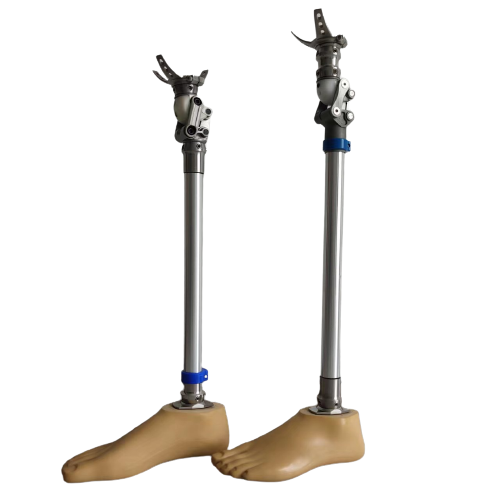Exploring the Future of Artificial Limb Implants: Innovations in Medical Technology
Release Time:
Jun 29,2025
Artificial limbs, often referred to as prosthetics, have evolved significantly over the past few decades. The advancements in materials science, robotics, and digital technology have led to the creation of artificial limb implants that not only mimic the appearance of natural limbs but also enable users to regain a level of mobility and independence that was previously unattainable. One of the mos
Artificial limbs, often referred to as prosthetics, have evolved significantly over the past few decades. The advancements in materials science, robotics, and digital technology have led to the creation of artificial limb implants that not only mimic the appearance of natural limbs but also enable users to regain a level of mobility and independence that was previously unattainable.
One of the most significant developments in artificial limb implants is the integration of smart technology. Many modern prosthetics are equipped with sensors and microprocessors that allow for real-time adjustments. These devices can adapt to different terrains and environments, providing users with a more natural walking experience. For instance, some artificial limbs can detect when a user is walking uphill or downhill and adjust the angle and resistance accordingly, enhancing stability and comfort.
Another crucial aspect of artificial limb implants is the use of advanced materials. Lightweight, durable materials such as carbon fiber and titanium are now commonly utilized, making these devices not only easier to wear but also more robust. These materials contribute to the longevity of the implants and reduce the physical burden on users, allowing for greater mobility and ease of use.
Furthermore, the field of bionics is making significant strides in the development of artificial limb implants. Bionic limbs, which are controlled by the user's muscle signals, provide a level of functionality that traditional prosthetics cannot achieve. By utilizing myoelectric technology, these implants can translate electrical signals from the muscles into movement, allowing for more precise control of the limb. This innovative approach greatly improves user experience and opens up new possibilities for rehabilitation and daily activities.
However, despite these advancements, there are still several considerations to keep in mind when discussing artificial limb implants. The surgical process involved in implanting these devices requires careful planning and expertise. Additionally, ongoing maintenance and adjustments may be necessary to ensure optimal performance. Healthcare professionals must be aware of the importance of post-operative care and the psychological support that patients may need during their adjustment period.
In conclusion, artificial limb implants represent a remarkable intersection of technology and medicine, offering hope and enhanced quality of life for many individuals. As advancements continue, it is essential for healthcare professionals to stay informed about the latest developments in this field. Understanding the benefits and considerations associated with artificial limb implants will enable better support for patients, ultimately leading to improved outcomes and satisfaction.
Keywords:
You Can Also Learn More About Industry Trends





